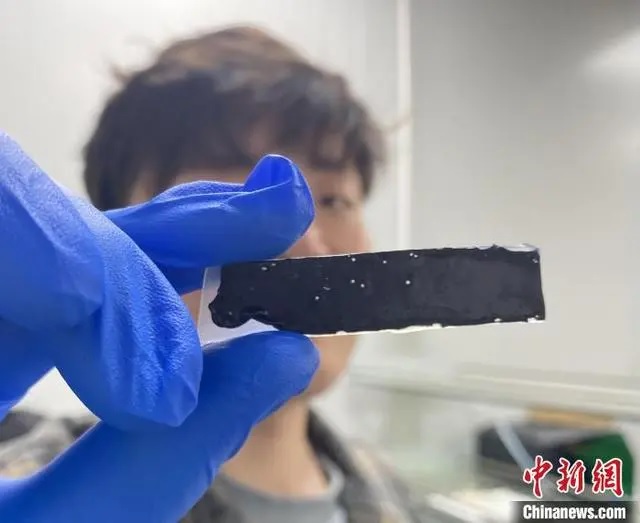Chinese scientists develop e-skin to give robots sense of touch


NANJING -- Chinese researchers have developed a new type of electronic skin (e-skin), enabling robots to navigate their surroundings through touch in the dark when visibility is limited.
The soft gel e-skin has a tape-like appearance and mimics the properties of human skin, with features like stretchability and self-healing ability. It is also able to detect changes in temperature and pressure, further enhancing its utility for use in robots.
A major difficulty in e-skin development has long been the lack of suitable composites with both physicochemical and sensory properties like human skin. The team of researchers from Southeast University found the solution by developing this new e-skin based on natural silk, a protein material.
They also added water-adsorbing calcium ions, weakly acidic hydrogen ions, and two-dimensional nanomaterials sensitive to environmental stimulus to synthesize the e-skin.
It has all the desired skin-like physicochemical properties, such as stretchability, self-healing ability, weak acidity and antibacterial activities, and it senses ambient temperature, pressure and humidity once powered on, said Duan Shengshun, a member of the research team.
"The e-skin heals itself," Duan added, noting that a skin graft can be easily done by attaching a new piece to the scratched piece.
The findings have been published in the journal ACS Nano.
- Lifesaving surgery for girl, 5, gives 2nd chance
- Guizhou's sour soup makes taste buds zing
- 8 killed as van carrying kids plunges into pond
- School breaks spark a surge in bookings for winter holiday tours
- New energy needs amended law
- Scientists find a way to develop crops that can withstand eco-stress




































